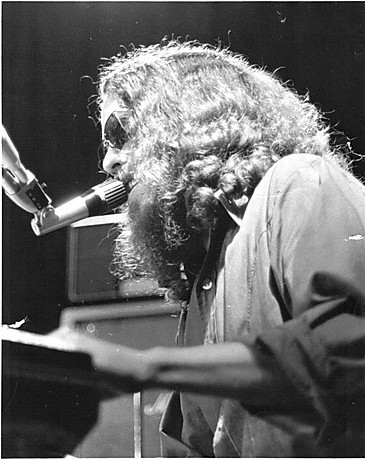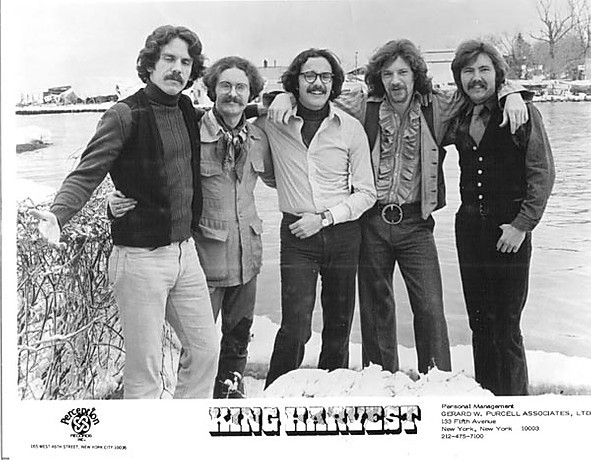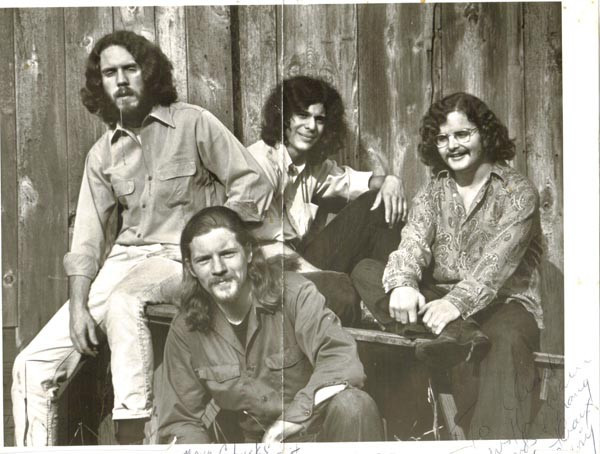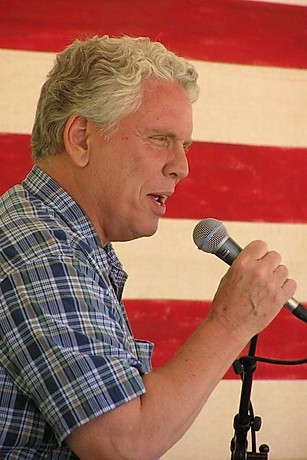“Dancing in the Moonlight” is a song that radiates pure joy and carefree vibes, instantly transporting listeners to a world of moonlit enchantment. The lyrics evoke images of romance, celebration, and escaping into a blissful night. But behind these uplifting “Dancing In The Moonlight Lyrics” lies a story of unexpected darkness and resilience, penned by the song’s writer, Sherman Kelly. This is the captivating tale of how trauma transformed into one of the most beloved feel-good songs of all time.
The journey of “Dancing in the Moonlight” began not under a romantic moonlit sky, but in the aftermath of a horrific experience in St. Croix. In 1969, Sherman Kelly, then a nightclub owner in St. Thomas, Virgin Islands, embarked on a day trip to St. Croix that would alter his life and inspire his most famous creation. Seasickness and misfortune led Kelly and his girlfriend to spend a night on a St. Croix beach, an innocent decision that turned violently wrong.
They became victims of a brutal street gang attack. Kelly was severely beaten, and his girlfriend suffered a horrific assault. Left for dead, Kelly miraculously survived, eventually finding his way to a hospital. This brutal encounter, believed to be among the first attacks by the notorious Fountain Valley Gang, left him physically and emotionally scarred.
 Sherman Kelly onstage in the 1970s. (Photo courtesy of Sherman Kelly)
Sherman Kelly onstage in the 1970s. (Photo courtesy of Sherman Kelly)
Recovering in Ithaca, New York, still battling pain and headaches, Kelly found solace in songwriting. It was during this period of convalescence that the seeds of “Dancing in the Moonlight” were sown. Far from reflecting the idyllic scene the lyrics paint, the song was born from a desire to escape reality, to envision “an alternate reality, the dream of a peaceful and joyous celebration of life,” as Kelly himself described it. The “dancing in the moonlight lyrics” were not inspired by a beautiful moonlit dance, but by a yearning for peace and joy in the face of violence and trauma.
The irony is palpable. The upbeat melody and cheerful “dancing in the moonlight lyrics” stand in stark contrast to the song’s dark origins. Yet, this very contrast is perhaps what gives the song its enduring power. It’s a testament to the human capacity to find light in darkness, to create beauty from pain.
Before King Harvest’s hit version, “Dancing in the Moonlight” had a less auspicious start. Kelly first recorded the song with his band Boffalongo in 1970. This version, featured on their album “Beyond Your Head,” showcased Sherman Kelly on lead vocals. However, Kelly candidly admits his vocal performance was “horrible,” attributing it to a misguided attempt by producers to enhance his performance with cocaine. Despite this, the Boffalongo version gained regional popularity, demonstrating the song’s inherent appeal even in a less polished form.
 King Harvest in 1972.(Photo courtesy of Sherman Kelly)
King Harvest in 1972.(Photo courtesy of Sherman Kelly)
The song also saw a release by a group called High Broom in 1970, but it wasn’t until King Harvest, featuring Kelly’s brother Wells Kelly and former Boffalongo member Doc Robinson, recorded it that “Dancing in the Moonlight” truly took off. Wells Kelly introduced the song to King Harvest, and their rendition, with Robinson on lead vocals, became the definitive version. Released in 1972, it soared up the charts, reaching No. 10 on the Cash Box Top 100 and No. 13 on the Billboard Hot 100, cementing its place in pop culture history.
Sherman Kelly even toured with King Harvest during the summer of 1972, witnessing firsthand the song’s burgeoning popularity. While he provided harmony vocals during live performances, Kelly humorously recalls a critic’s assessment: “‘As a singer, Sherman Kelly is not too bad of a songwriter.'” Despite enjoying the initial excitement of touring with a hit song, the realities of life on the road quickly wore thin for Kelly, and he soon returned to a more grounded life.
 Boffalongo, circa 1970.(Photo courtesy of Sherman Kelly)
Boffalongo, circa 1970.(Photo courtesy of Sherman Kelly)
The legacy of “Dancing in the Moonlight” extends far beyond King Harvest. Wells Kelly, later joining forces with John Hall and Larry Hoppen (also from Boffalongo) to form Orleans, brought the song with him. Orleans also recorded their own version, further popularizing the track. Even today, Orleans, featuring John Hall and Larry Hoppen’s brothers, continues to perform “Dancing in the Moonlight,” keeping its spirit alive.
In 2000, Toploader’s cover of “Dancing in the Moonlight” introduced the song to a new generation, achieving international success and proving its timeless appeal. The song has also graced numerous films, television shows, and video games, including “Guardians of the Galaxy: The Telltale Signs,” ensuring its continued relevance and charm.
The enduring appeal of “Dancing in the Moonlight” likely lies in its ability to evoke a sense of pure escapism and joy, regardless of its somber origins. The “dancing in the moonlight lyrics” themselves are simple yet evocative, painting a picture of carefree celebration:
“Dancing in the moonlight
Everybody’s feeling warm and bright
It’s such a fine and natural sight
Everybody’s dancing in the moonlight”
These words, born from a desire to envision a better world amidst trauma, resonate with listeners seeking a moment of lightheartedness and release. They offer a universal invitation to leave worries behind and embrace the simple joy of dancing under the moon.
 Sherman Kelly today.(Photo courtesy of Sherman Kelly)
Sherman Kelly today.(Photo courtesy of Sherman Kelly)
Sherman Kelly’s journey took him beyond the realm of music after the tragic loss of his brother Wells. He pursued a career in psychotherapy, dedicating himself to helping others navigate their own traumas and find healing. However, his musical legacy remains indelible. “Dancing in the Moonlight,” born from darkness yet radiating light, stands as a testament to the power of music to transform personal pain into universal joy. The next time you hear the infectious melody and sing along to the “dancing in the moonlight lyrics,” remember the incredible story behind them – a story of resilience, hope, and the transformative power of song.

